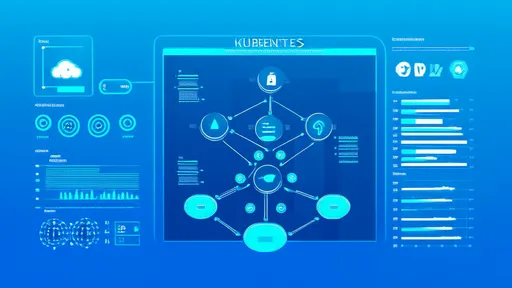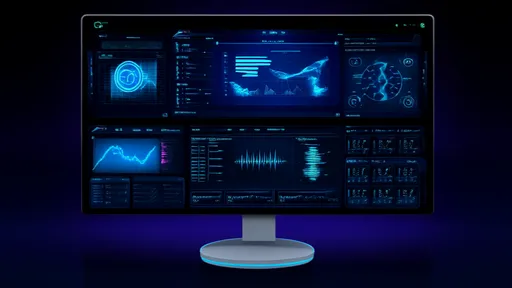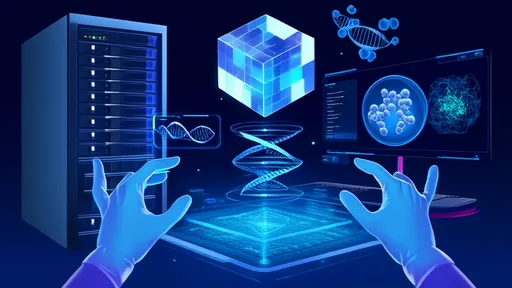In the ever-evolving landscape of artificial intelligence, voice generation technology has emerged as one of the most captivating and, at times, unsettling advancements. The ability to clone and generate highly realistic human voices is no longer confined to the realms of science fiction; it is a present-day reality with profound implications. This technology, often referred to as voice cloning or neural voice synthesis, leverages deep learning models to analyze, replicate, and generate speech that is indistinguishable from that of a real person. The process begins with the collection of a sample of the target voice, which can be as short as a few seconds or as long as several hours, depending on the desired fidelity and the complexity of the model being used.
The core of this technology lies in sophisticated neural network architectures, particularly variants of generative adversarial networks (GANs) and autoregressive models like WaveNet or Tacotron. These models are trained on massive datasets of human speech, learning the intricate patterns of prosody, timbre, pitch, and emotional inflection that characterize natural communication. When provided with a new text input, the model synthesizes speech by predicting and generating the corresponding audio waveform, embedding the unique vocal characteristics of the cloned voice into the output. The result is a synthetic voice that can read any text with the same tonal qualities and nuances as the original speaker.
One of the most prominent applications of this technology is in the entertainment and media industries. Voice cloning allows for the preservation and recreation of iconic voices, enabling filmmakers to dub content seamlessly or even "resurrect" the voices of historical figures or deceased actors for new productions. In audiobooks and podcasts, it offers a cost-effective solution for generating narrations without requiring the continuous presence of a voice actor. Moreover, for individuals who have lost their ability to speak due to illness or injury, voice cloning provides a powerful tool for restoring their unique vocal identity, offering not just functionality but also emotional comfort and personal connection.
However, the rise of highly realistic voice generation is not without its dark side. The same technology that can recreate beloved voices can also be weaponized for malicious purposes. Deepfake audio has already been used in sophisticated phishing scams, fraudulent activities, and misinformation campaigns, where cloned voices of executives or public figures are employed to deceive victims into transferring money or believing false narratives. The potential for misuse in political manipulation, identity theft, and harassment is a growing concern, highlighting the urgent need for robust detection methods and ethical guidelines to govern the use of this powerful tool.
From a technical standpoint, achieving high fidelity in voice cloning involves addressing several challenges. Variability in recording conditions, background noise, and emotional expressiveness in the training data can affect the quality of the cloned voice. Advanced models now incorporate techniques such as noise reduction, emotion embedding, and style transfer to enhance the naturalness and adaptability of the generated speech. Furthermore, real-time voice cloning is becoming increasingly feasible, allowing for dynamic interactions where the AI can respond with a cloned voice during live conversations, opening up new possibilities for virtual assistants, customer service, and interactive entertainment.
The ethical landscape surrounding voice cloning is complex and multifaceted. Issues of consent, privacy, and intellectual property rights are at the forefront of debates. Who owns a voice? Can an individual’s vocal identity be used without their permission, especially after their death? Regulatory frameworks are struggling to keep pace with the rapid advancement of the technology, leading to a legal gray area that necessitates careful consideration and proactive legislation. Companies developing these tools are increasingly implementing safeguards, such as requiring explicit consent for voice cloning and incorporating audio watermarking to distinguish synthetic voices from natural ones.
Looking ahead, the future of voice generation AI is poised to become even more integrated into daily life. As models become more efficient and accessible, we may see personalized voice assistants that speak in the user’s own voice or in the voices of their chosen characters. Multilingual and cross-lingual voice cloning could break down language barriers, allowing a speaker’s voice to deliver content fluently in languages they never spoke. However, this progress must be accompanied by a collective effort to ensure responsible development and deployment, balancing innovation with safeguards against abuse.
In conclusion, the ability to clone and generate highly realistic voices represents a remarkable achievement in AI research, offering transformative benefits across various sectors while also presenting significant ethical and security challenges. As society navigates this new terrain, it is imperative to foster dialogue among technologists, policymakers, and the public to harness the positive potential of voice cloning while mitigating its risks. The voice, as a fundamental aspect of human identity, deserves both celebration and protection in the age of artificial intelligence.
In today's rapidly evolving cybersecurity landscape, organizations face increasingly sophisticated threats that traditional perimeter-based defenses struggle to contain. The concept of microsegmentation has emerged as a critical component of zero trust architecture, fundamentally transforming how enterprises protect their digital assets. Unlike conventional security approaches that focus on building strong outer walls, microsegmentation operates on the principle that no entity—whether inside or outside the network—should be automatically trusted.
In the ever-evolving landscape of container orchestration, Kubernetes has firmly established itself as the de facto standard for managing containerized applications at scale. One of its most powerful features is the ability to automatically scale applications in response to fluctuating demand, ensuring optimal performance while controlling costs. However, implementing an effective autoscaling strategy requires more than just enabling the feature; it demands a thoughtful approach grounded in proven best practices.
In today's digital landscape, cloud computing has become the backbone of modern business operations, offering unparalleled scalability and flexibility. However, this convenience comes at a cost—literally. As organizations increasingly migrate to the cloud, managing and controlling cloud expenditures has emerged as a critical challenge. Many companies find themselves grappling with unexpected bills, wasted resources, and a lack of visibility into where their cloud dollars are going. This is where FinOps, a cultural practice and operational framework, steps in to bring financial accountability to the world of cloud spending.
The cybersecurity landscape continues to evolve at a breakneck pace, with containerization sitting squarely at the heart of modern application development. As organizations increasingly deploy applications using technologies like Docker and Kubernetes, the security of the underlying container images has become a paramount concern. This has spurred the development and maturation of a robust market for container image vulnerability scanning tools, each promising to fortify the software supply chain. A comprehensive evaluation of these tools reveals a complex ecosystem where capabilities, integration depth, and operational efficiency vary significantly.
As enterprises continue their digital transformation journeys, the debate between SD-WAN and SASE for hybrid cloud connectivity has become increasingly prominent. These two technologies represent different generations of networking solutions, each with distinct approaches to addressing the complex challenges of modern distributed architectures. While SD-WAN emerged as a revolutionary improvement over traditional MPLS networks, SASE represents a more comprehensive framework that integrates networking and security into a unified cloud-native service.
The evolution of cloud-native databases has entered a new phase with the rise of serverless architectures. What began as a shift from on-premise data centers to cloud-hosted instances has now matured into a more dynamic, cost-efficient, and scalable paradigm. The serverless model represents a fundamental rethinking of how databases are provisioned, managed, and utilized, moving away from static resource allocation toward an on-demand, pay-per-use approach. This transformation is not merely a technical upgrade but a strategic enabler for businesses aiming to thrive in an unpredictable, data-intensive landscape.
In the rapidly evolving landscape of cloud-native computing, the demand for robust observability has never been more critical. As organizations migrate to dynamic, distributed architectures, traditional monitoring tools often fall short in providing the depth and real-time insights required to maintain system reliability and performance. Enter eBPF—extended Berkeley Packet Filter—a revolutionary technology that is redefining how we achieve observability in cloud-native environments. Originally designed for network packet filtering, eBPF has evolved into a powerful kernel-level tool that enables developers and operators to gain unprecedented visibility into their systems without modifying application code or restarting processes.
The landscape of enterprise IT has undergone a seismic shift with the widespread adoption of multi-cloud and hybrid cloud strategies. While this approach offers unparalleled flexibility, cost optimization, and avoids vendor lock-in, it introduces a formidable layer of complexity. At the heart of this complexity lies the significant challenge of managing compatibility across disparate cloud environments. Cross-cloud management platforms have emerged as the central nervous system for this new reality, but their effectiveness is directly tied to their ability to navigate a labyrinth of compatibility issues.
The economic implications of serverless computing have become a central topic in cloud architecture discussions, shifting the conversation from pure technical implementation to strategic financial optimization. As organizations increasingly adopt Function-as-a-Service (FaaS) platforms, understanding the nuanced cost structures and optimization opportunities has become critical for maintaining competitive advantage while controlling cloud expenditures.
The landscape of software development has undergone a seismic shift with the proliferation of cloud-native architectures. As organizations race to deliver applications faster and more reliably through CI/CD pipelines, a critical challenge has emerged: security. The traditional approach of bolting on security measures at the end of the development cycle is no longer tenable. It creates bottlenecks, delays releases, and often results in vulnerabilities being discovered too late, when remediation is most costly and disruptive. In response, a transformative strategy known as "shifting left" has gained significant traction, fundamentally rethinking how and when security is integrated into the software development lifecycle.
The landscape of software testing is undergoing a profound transformation, driven by the relentless integration of artificial intelligence. One of the most impactful and rapidly evolving applications of AI in this domain is the automation of test case generation. This is not merely an incremental improvement to existing processes; it represents a fundamental shift in how development teams approach quality assurance, promising to accelerate release cycles while simultaneously enhancing the robustness and coverage of testing regimens.
In the ever-evolving landscape of artificial intelligence, voice generation technology has emerged as one of the most captivating and, at times, unsettling advancements. The ability to clone and generate highly realistic human voices is no longer confined to the realms of science fiction; it is a present-day reality with profound implications. This technology, often referred to as voice cloning or neural voice synthesis, leverages deep learning models to analyze, replicate, and generate speech that is indistinguishable from that of a real person. The process begins with the collection of a sample of the target voice, which can be as short as a few seconds or as long as several hours, depending on the desired fidelity and the complexity of the model being used.
The semiconductor industry stands at an inflection point where traditional chip design methodologies are increasingly strained by the complexity of modern architectures. As Moore's Law continues its relentless march, the once-manual processes of floorplanning and routing have become prohibitively time-consuming and error-prone. In this challenging landscape, reinforcement learning has emerged not merely as an experimental approach but as a transformative force in automating and optimizing chip layout.
In laboratories and research institutions across the globe, a quiet revolution is underway as artificial intelligence becomes an indispensable partner in scientific discovery. What was once the domain of human intuition, years of trial and error, and painstaking data analysis is now being accelerated at an unprecedented pace by machine learning algorithms and computational power. This transformation is not about replacing scientists but empowering them to ask bigger questions and uncover deeper truths about our universe.
In the ever-evolving landscape of artificial intelligence, a quiet revolution is taking place that promises to fundamentally reshape how machines understand the world. For decades, the field has been dominated by correlation-based approaches—powerful pattern recognition systems that excel at finding statistical relationships in data but fall painfully short when it comes to true understanding. The emerging discipline of causal machine learning seeks to change this paradigm, moving beyond mere correlations to uncover the actual mechanisms that drive phenomena in the real world.














